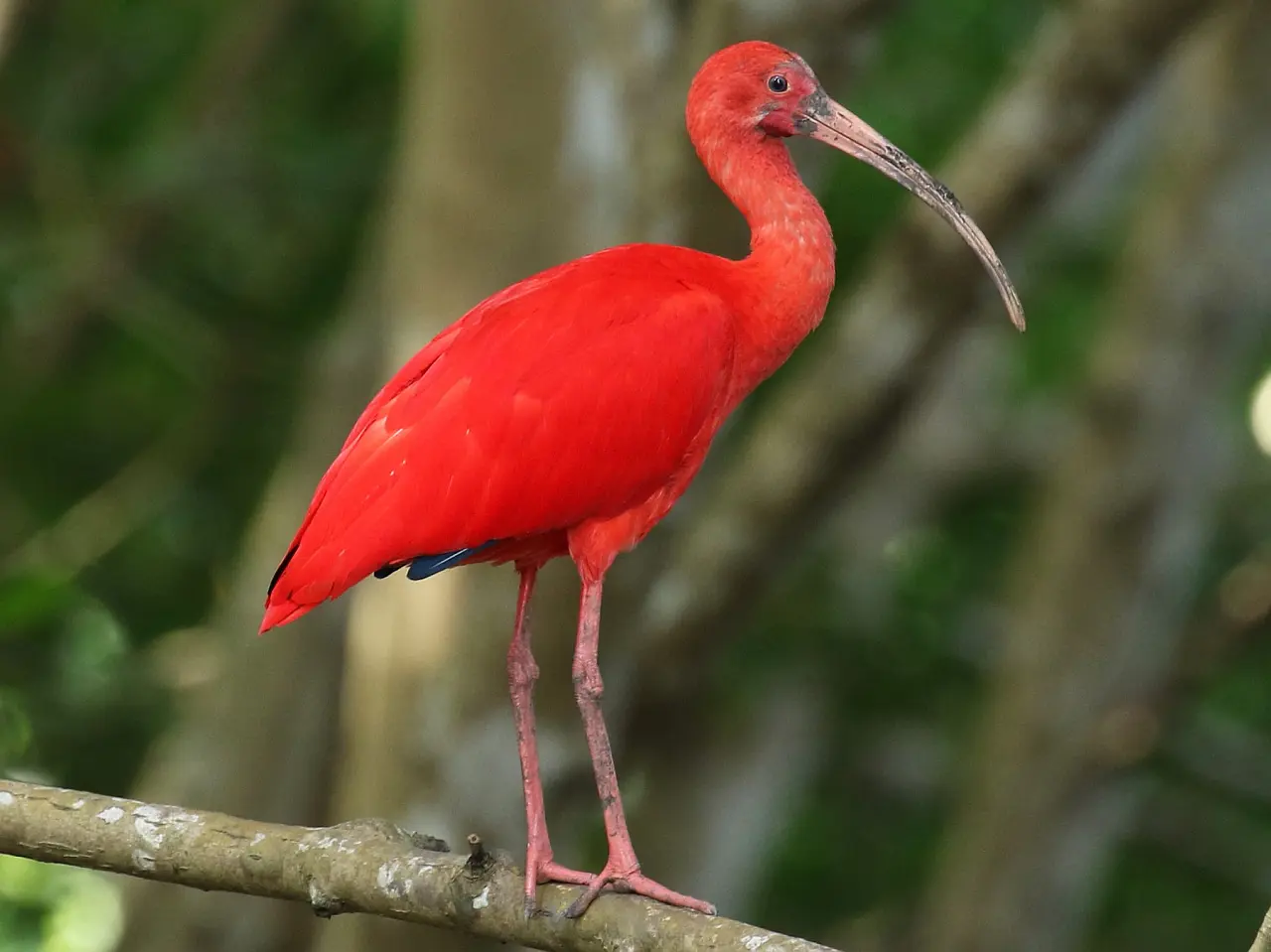In the cloud forests and high-altitude regions of the Andes in South America, a unique and remarkable hummingbird species soars through the air—the Sword-billed Hummingbird (Ensifera ensifera). With its extraordinary adaptation and striking appearance, this avian marvel has captured the attention of birdwatchers and nature enthusiasts alike. Let’s delve into the fascinating world of the Sword-billed Hummingbird and explore the remarkable qualities that make it a true gem of the hummingbird family.
Sword-billed Hummingbird images
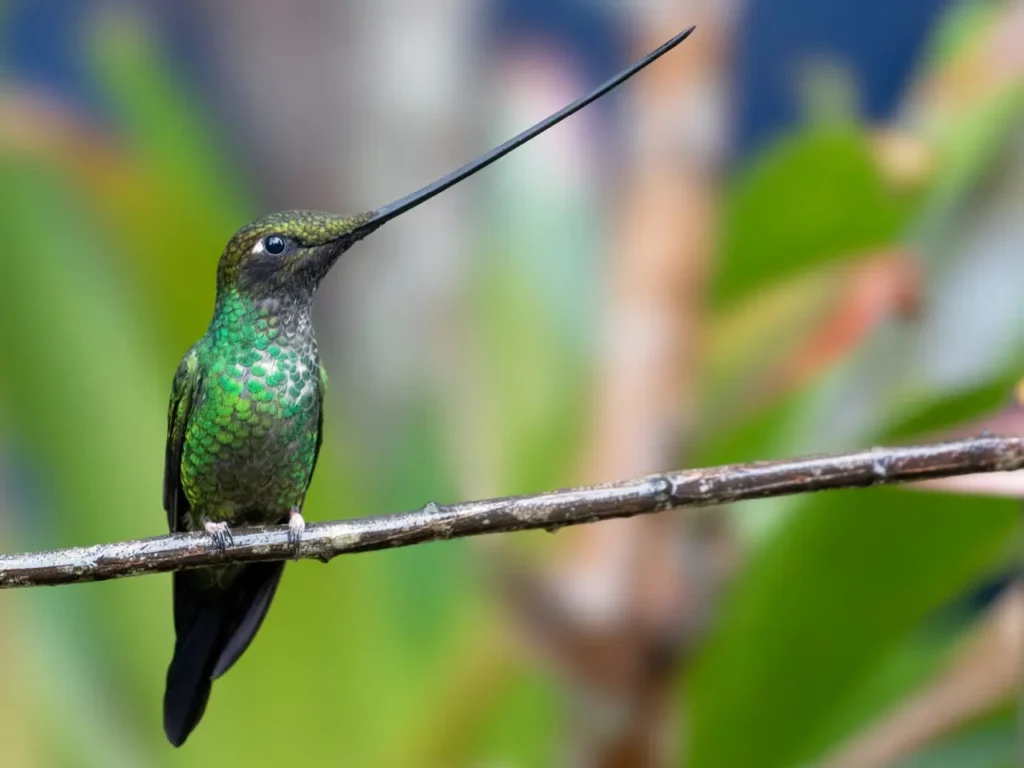
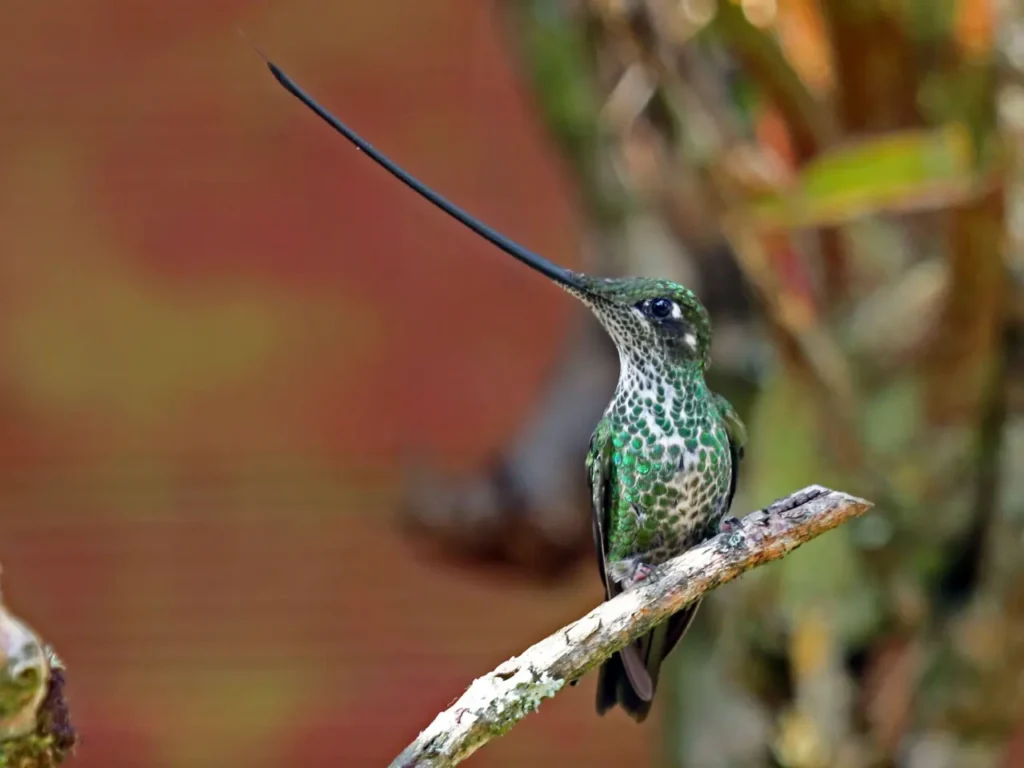
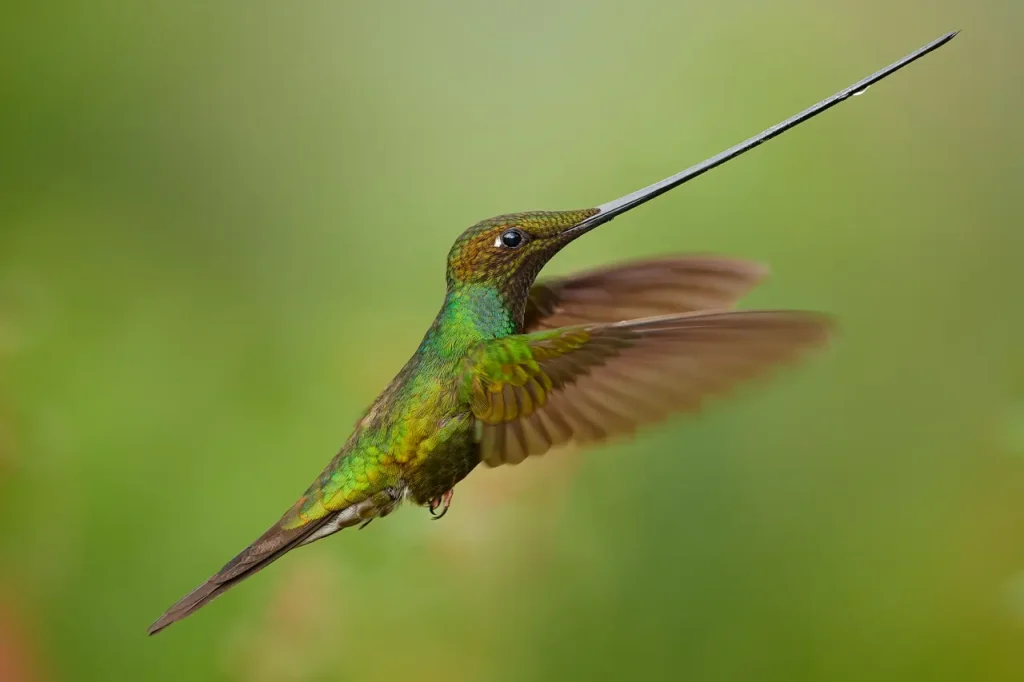

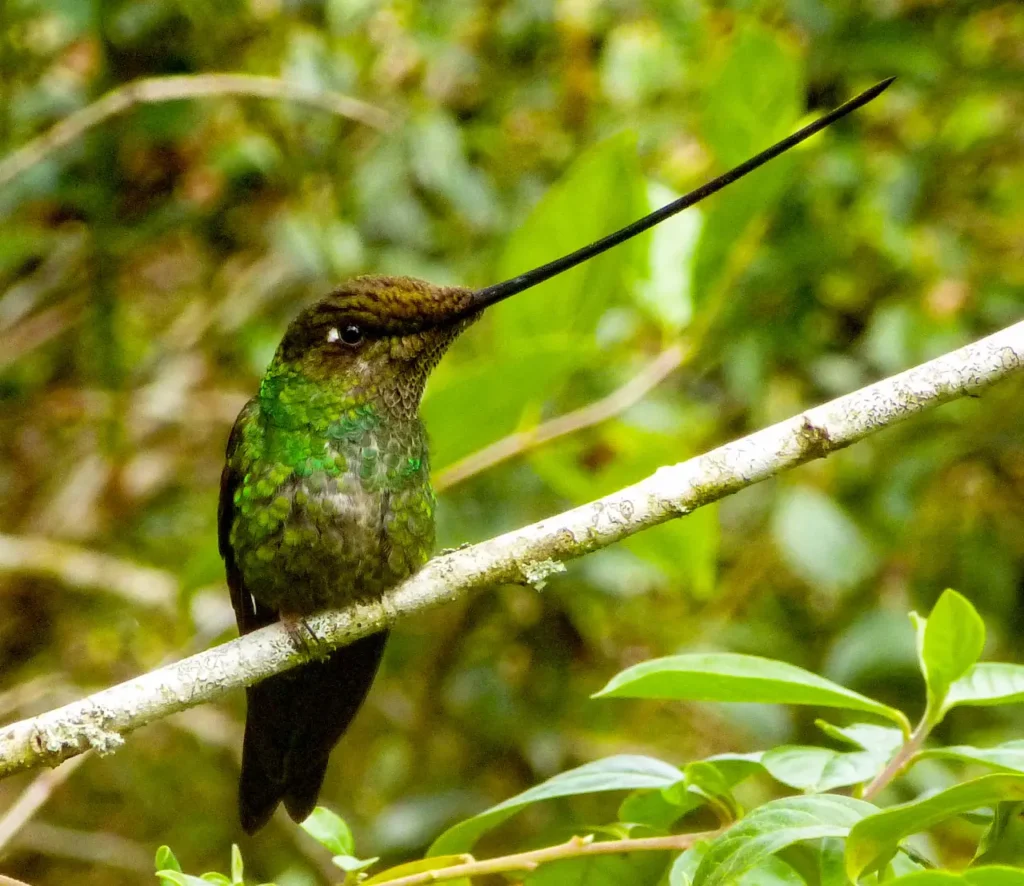

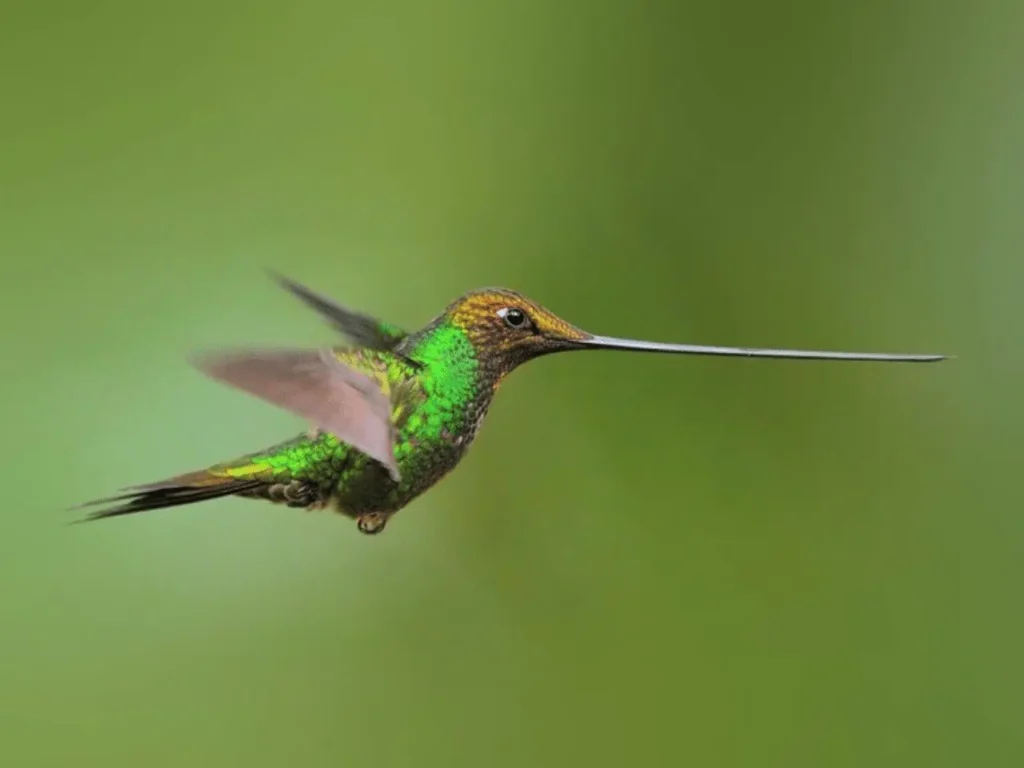

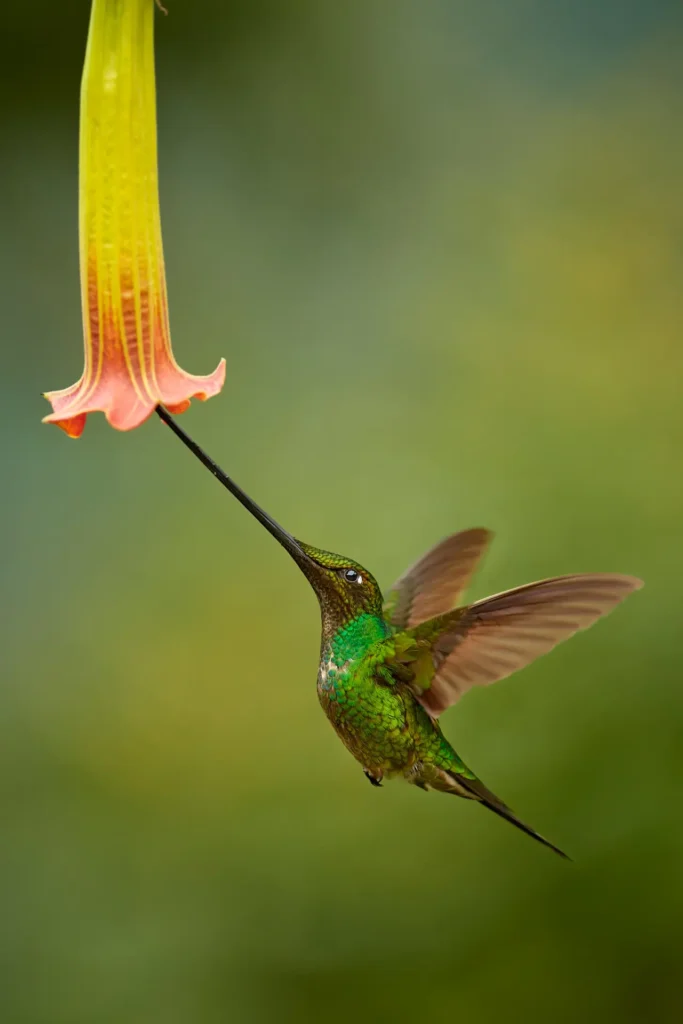

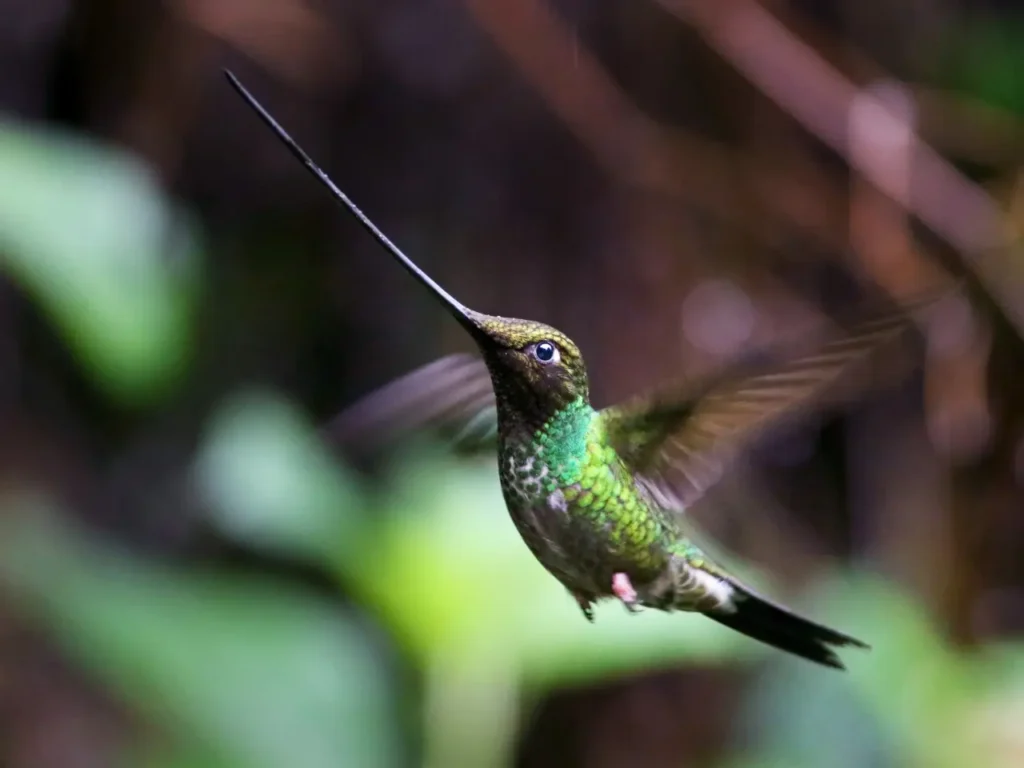
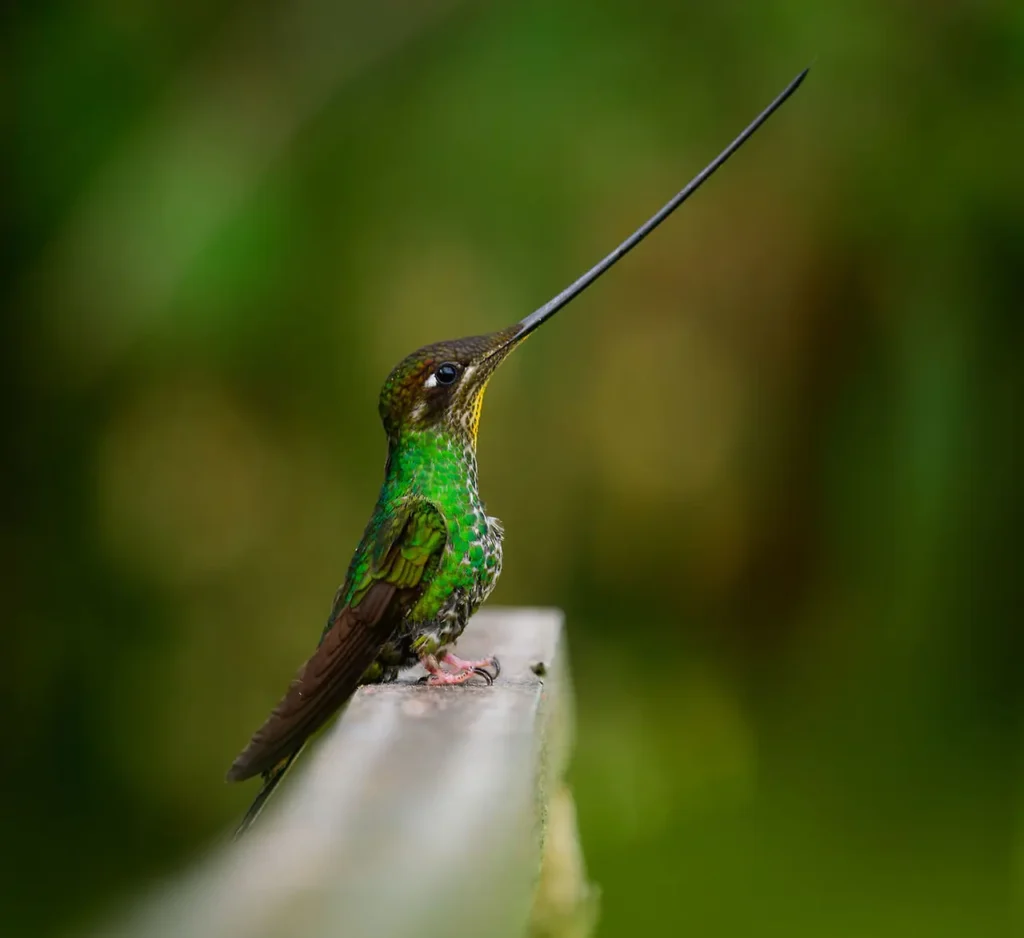
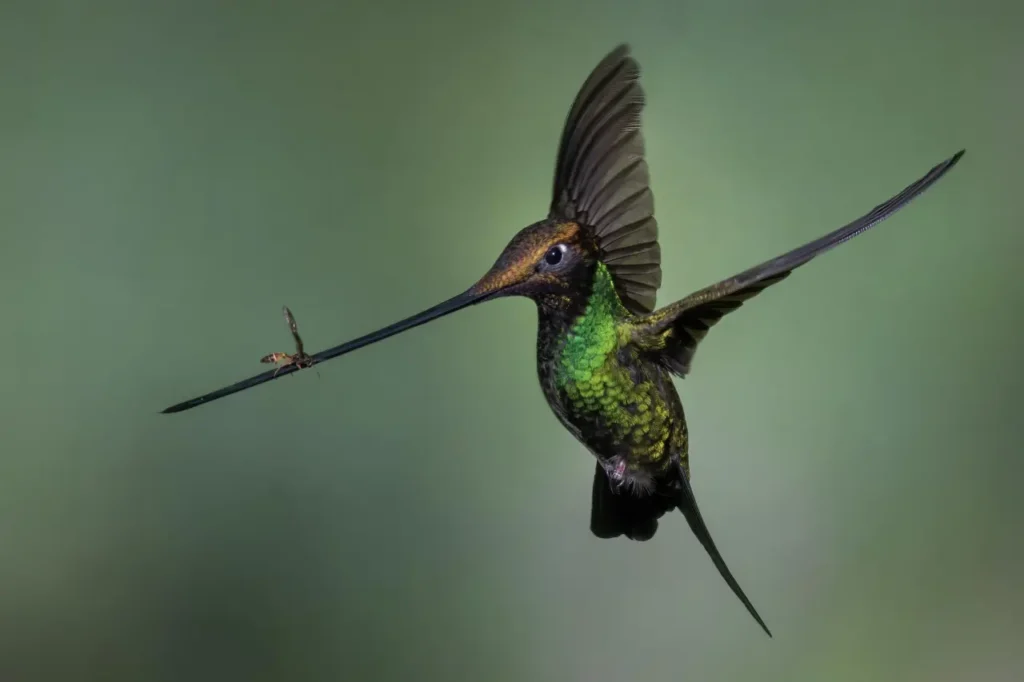
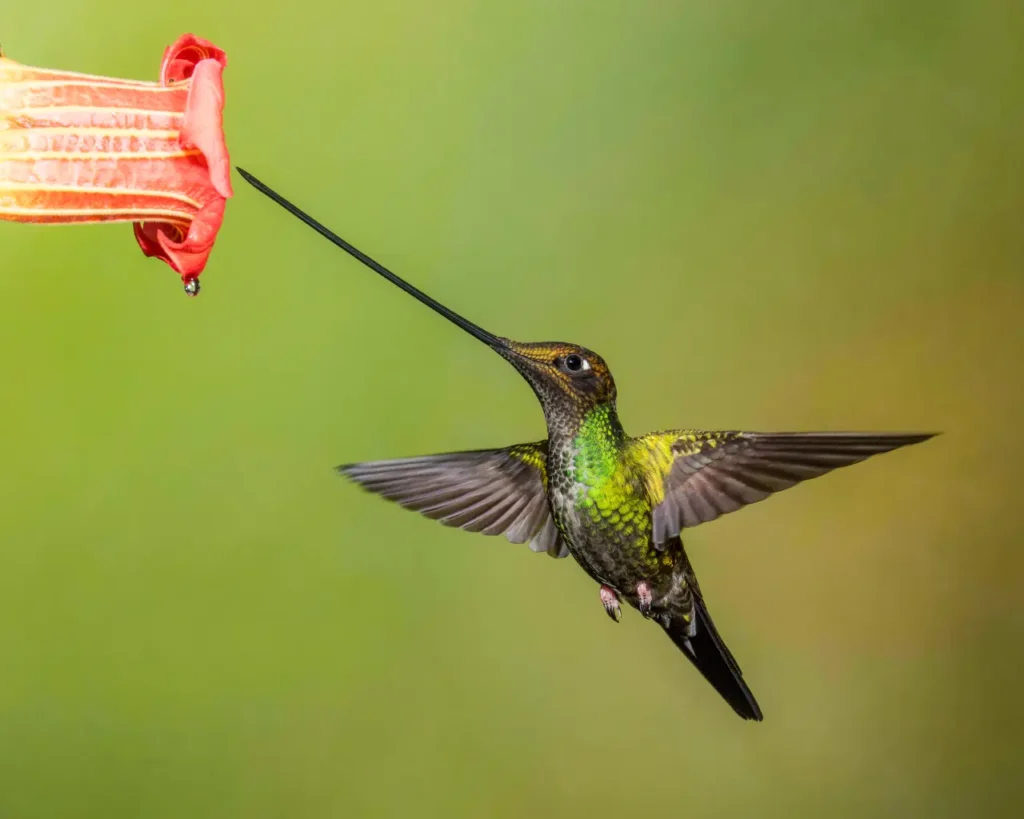
Appearance and Distinctive Feature
The Sword-billed Hummingbird is a medium-sized hummingbird known for its distinctive and defining feature—the remarkably long, straight bill. In fact, the bill of this hummingbird is so long that it exceeds the length of its body, making it a one-of-a-kind adaptation among birds. The bill can measure up to 10 centimeters (about 4 inches) in length, and it is specifically adapted for sipping nectar from tubular flowers that other hummingbirds might struggle to access.
The rest of the bird’s plumage is relatively subdued, with predominantly green and bronze feathers on the upperparts and a lighter underbelly. Males and females share similar appearances, making it difficult to distinguish between the sexes by sight alone.
Habitat and Distribution
Sword-billed Hummingbirds are native to the Andean mountain ranges of South America, particularly found in countries such as Ecuador, Colombia, Peru, Venezuela, and Bolivia. These magnificent birds thrive in high-altitude cloud forests and montane habitats, where they find a variety of nectar-rich flowers on which to feed.
Their habitat preference for mountainous regions is influenced by the abundance of flowering plants in these areas, as well as the cooler temperatures and misty conditions that prevail at higher elevations.
Feeding Habits and Adaptations
The most striking adaptation of the Sword-billed Hummingbird is, of course, its elongated bill. This remarkable feature allows the bird to access nectar from deep within tubular flowers that are inaccessible to other hummingbird species. While most hummingbirds feed by inserting their bills directly into flowers, the Sword-billed Hummingbird hovers close to the flower and uses its specialized tongue to draw nectar from within.
This adaptation enables the Sword-billed Hummingbird to access a broader range of flowers and nectar sources, giving it a competitive advantage in its mountainous habitat.
Conservation and Challenges
As with many species of birds, the Sword-billed Hummingbird faces threats related to habitat loss and fragmentation due to deforestation and human activities. Additionally, climate change and alterations to the delicate balance of the cloud forests can impact the availability of suitable nectar sources and disrupt the bird’s natural feeding behaviors.
Conservation efforts aim to protect the hummingbird’s forest habitats and raise awareness about the importance of preserving these unique and vulnerable species.
A Living Marvel of Evolution
The Sword-billed Hummingbird stands as a living marvel of evolution, showcasing the extraordinary adaptations that can arise in response to the challenges of the natural world. Its long, sword-like bill serves as a symbol of the ingenuity and diversity found within the avian kingdom.
As we admire the beauty and adaptability of the Sword-billed Hummingbird, we are reminded of the importance of preserving the delicate ecosystems where it thrives. By valuing and protecting these mountainous cloud forests, we ensure that future generations can continue to marvel at the grace and wonder of the Sword-billed Hummingbird—a true gem among the hummingbird species.
